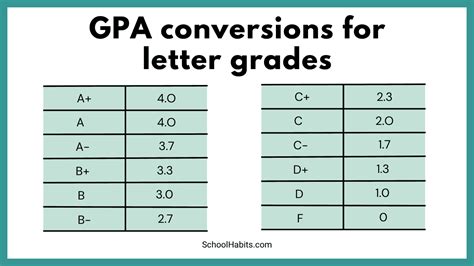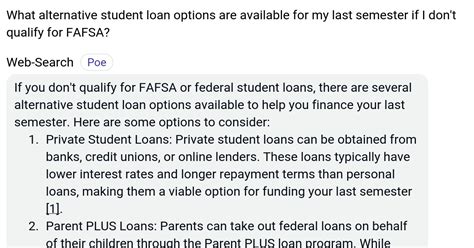Introduction
Navigating the complexities of higher education financing can be daunting, especially for students who do not qualify for federal student aid through the Free Application for Federal Student Aid (FAFSA). However, there are several alternative options available to individuals seeking financial assistance for their educational pursuits. This article delves into the various student loan options without FAFSA, providing an in-depth analysis of their eligibility requirements, interest rates, repayment terms, and potential pitfalls.

Private Student Loans
Private student loans, offered by banks, credit unions, and online lenders, provide an alternative to federal student loans for students who do not meet FAFSA eligibility. These loans typically have higher interest rates than federal loans and may require a credit check and a cosigner.
- Eligibility: Private student loans are available to students enrolled at least half-time in a degree-granting program at an eligible institution.
- Interest Rates: Variable interest rates on private student loans typically range from 3% to 12%, while fixed interest rates range from 4% to 14%.
- Repayment Terms: Repayment periods for private student loans vary, but most lenders offer terms ranging from 5 to 15 years.
- Pitfalls: Private student loans can have strict eligibility requirements and high interest rates. Borrowers should carefully consider their financial situation and explore other funding options before taking on private student debt.
State-Based Student Loans
Many states offer student loan programs to residents attending eligible institutions within their state. These loans may have lower interest rates and more flexible repayment terms than private student loans.
- Eligibility: Eligibility for state-based student loans varies by state and may be based on residency, income, and academic achievement.
- Interest Rates: Interest rates on state-based student loans typically range from 3% to 8%.
- Repayment Terms: Repayment periods for state-based student loans vary, but most states offer terms ranging from 5 to 15 years.
- Pitfalls: State-based student loans may have limited funding and may not be available to all students.
Employer-Sponsored Tuition Assistance
Some employers offer tuition assistance programs to their employees who are pursuing higher education. These programs typically cover a portion of the tuition costs for employees who meet certain eligibility requirements.
- Eligibility: Eligibility for employer-sponsored tuition assistance programs varies by employer and may be based on job performance, length of employment, and degree level.
- Funding: The amount of funding available through employer-sponsored tuition assistance programs varies, but most employers cover a percentage of tuition costs, up to a certain limit.
- Pitfalls: Employer-sponsored tuition assistance programs may have restrictions on the types of degrees or programs that are eligible for funding.
Scholarships and Grants
Scholarships and grants provide financial assistance to students who demonstrate academic merit, financial need, or other criteria. These funds do not need to be repaid.
- Eligibility: Eligibility for scholarships and grants varies widely depending on the specific criteria set by the funding organization.
- Funding: The amount of funding available through scholarships and grants varies, but some scholarships can provide substantial financial support.
- Pitfalls: Scholarships and grants can be highly competitive, and students may need to apply to multiple programs to increase their chances of success.
Creative Loan Options
In addition to traditional student loans, there are several creative loan options that students without FAFSA may consider.
- Income-Share Agreements (ISAs): ISAs are agreements between students and investors. Students receive funding upfront and agree to pay back a percentage of their future income for a set period of time.
- Peer-to-Peer Lending: Peer-to-peer lending platforms connect borrowers with investors. Students can apply for loans from individual investors, who determine the interest rates and repayment terms.
- Crowdfunding: Crowdfunding platforms allow students to raise funds from friends, family, and the general public. Students create online campaigns to solicit donations for their educational expenses.
Conclusion
Navigating the financial landscape of higher education without FAFSA can be challenging, but there are several alternative options available to students seeking financial assistance. By exploring private student loans, state-based student loans, employer-sponsored tuition assistance, scholarships and grants, and creative loan options, students can increase their chances of securing the funding they need to pursue their educational goals.
FAQs
1. What is the difference between federal student loans and private student loans?
Federal student loans are loans backed by the U.S. government, while private student loans are offered by banks, credit unions, and online lenders. Federal student loans have lower interest rates and more flexible repayment options than private student loans.
2. Am I eligible for private student loans without a cosigner?
Some private student lenders offer loans to students without a cosigner. However, these loans typically have higher interest rates and shorter repayment terms.
3. What is the best way to compare private student loans?
When comparing private student loans, consider the interest rate, repayment terms, fees, and any other benefits or perks offered by the lender.
4. What are some disadvantages of private student loans?
Private student loans can have high interest rates and strict eligibility requirements. Additionally, private student loans are not eligible for federal student loan forgiveness programs.
5. Are there any income limits for state-based student loans?
Yes, some state-based student loan programs have income limits. Students who exceed the income limit may not be eligible for funding.
6. Can I use employer-sponsored tuition assistance to pay for graduate school?
Some employer-sponsored tuition assistance programs cover graduate school expenses. However, eligibility requirements may vary depending on the employer’s policy.
